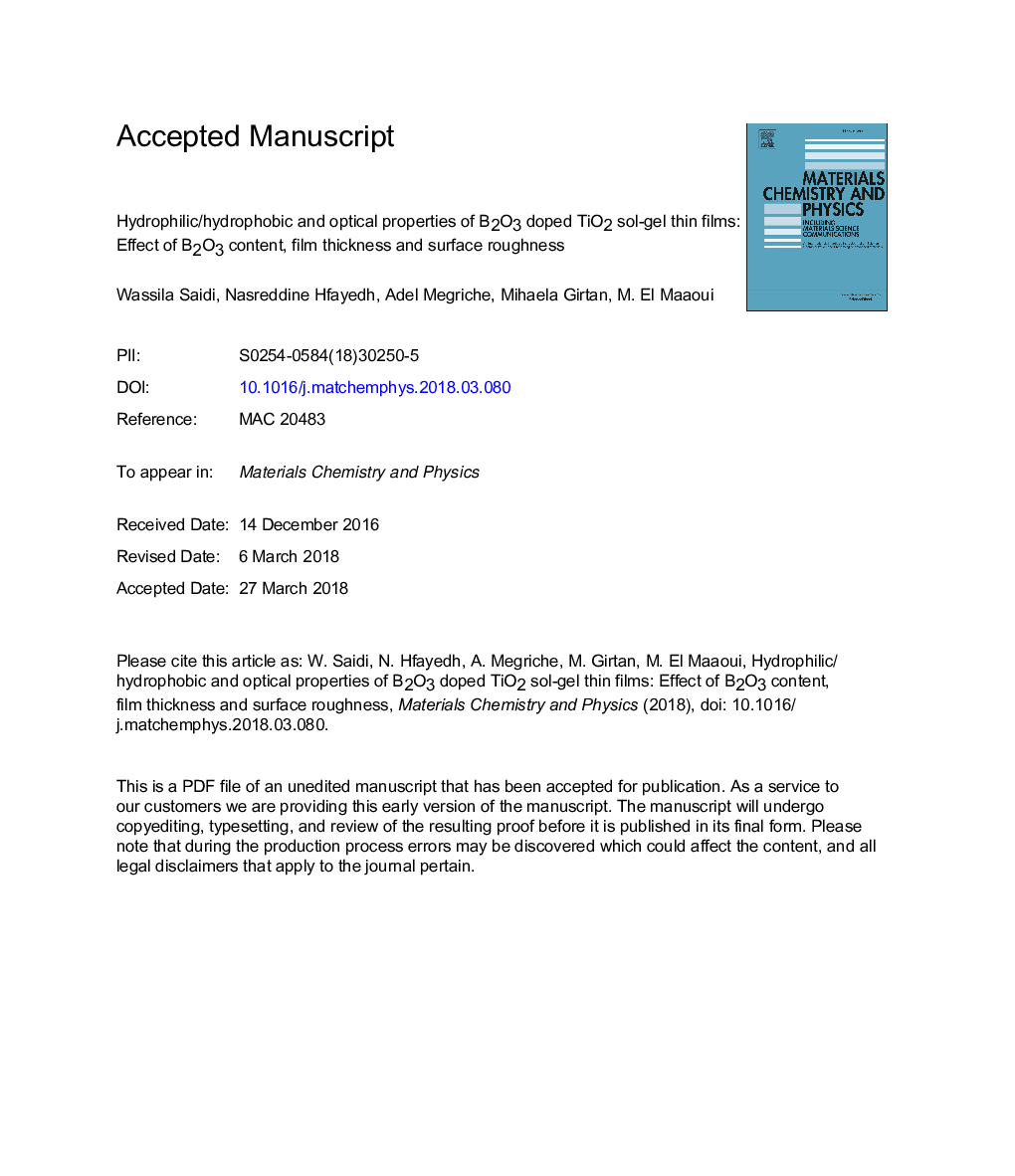| Article ID | Journal | Published Year | Pages | File Type |
|---|---|---|---|---|
| 7921322 | Materials Chemistry and Physics | 2018 | 29 Pages |
Abstract
High transparent B2O3-doped TiO2 thin films were deposited on glass substrates using sol-gel method and spin coating. B2O3 content was varied from 0 to 20â¯wt %. Each film layer was calcined at 500â¯Â°C for 1â¯h. Film thickness was determined by profilometer and UV techniques. Monolayer thicknesses decrease from 55â¯nm to 47â¯nm when B2O3 content increases. For multilayer films, the thickness grows by steps of about 50â¯nm by layer and slightly decreases when boron content increases. The presence of B2O3 affected also roughness, light transmission and optical gap. As an example, for two layer films, Roughness decreases from 1.1 to 0.65â¯nm when B2O3 increases from 0 to 20%. Light transmission at λâ¯=â¯500â¯nm and optical gap were enhanced from 93 to 97% and from 3.59 to 3.72â¯eV respectively. All these changes could be explained by a better melting of the thin layer at 500â¯Â°C, This was confirmed with XR diffraction and AFM analysis. The second part of this study concerned the variation of hydrophobic, hydrophilic properties. Water contact angle was measured in standard conditions. It was found for single layer samples, that θ increased from 16 to 61â¯Â±â¯1° when B2O3 content varies from 0 to 20%. The study was performed also for samples having 2, 3 and 4 layers. Contact angle increased slowly with film thickness. The highest angle was equal to 75° (±1°); it was obtained for samples having four layers and doped with 20% B2O3. The dependence of θ with physical properties particularly with surface roughness and thickness was also examined.
Related Topics
Physical Sciences and Engineering
Materials Science
Electronic, Optical and Magnetic Materials
Authors
Wassila Saidi, Nasreddine Hfayedh, Adel Megriche, Mihaela Girtan, M. El Maaoui,
